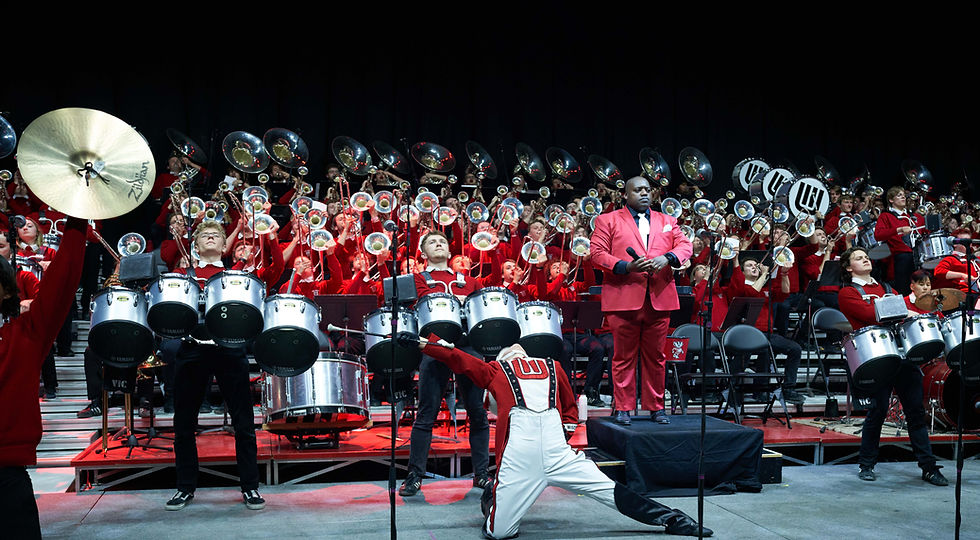BLOG #7 ARTISTS & ARTS ORGS: CONNECTING VIRTUALLY WHILE PHYSICALLY DISCONNECTED
- Sarah Marty

- Apr 28, 2020
- 4 min read
Updated: Aug 3, 2020
Blog #7: Artists and Arts Organizations: Connecting virtually while physically disconnected.
As few thoughts inspired by an excellent article from Vanity Fair: “Furloughed Musicians and A New Digital Frontier: Performing Arts in the COVID-19 Shutdown.“ .
Key Takeaway: “One challenge is figuring out how to monetize the digital experience for an audience that’s bathing in a glut of free content. Another is figuring out how to create an experience that’s satisfying online, by organizations that have been trying to do this for some years already.”
.
For years there have been ongoing conversations about industry trends tied to demographics – In most performing arts organizations, the largest share of subscribers and donors were from the two biggest generations (Greatest Generation and Baby Boomers). Gen X is a smaller generation with less buying power than those before it. Beyond that, we’ve fretted that Millienials and Gen Z would choose a multitude of online content options over live performance. Add in the move of many patrons from subscription purchases, committing to and paying for dates months or even a year in advance, toward single ticket purchases that happen a week or two before the performance. The uncertainty of how arts organizations are funded and an increasingly unsustainable revenue mix have been there for a long time, part of ongoing conversations on a larger scale for the last decade, and has amplified with each passing season.
.
Inevitably these conversations come back to the assertion that many potential audiences would choose the convenience of Netflix and takeout over a attending an event in person – paying for childcare, putting on real pants, driving to a venue, dealing with limited parking options, and not having the ability to pause or come back to whatever they’re watching.
.
As more artists and arts organizations share their work via digital platforms and try to build community online, we’re BOTH increasingly grateful for these opportunities AND becoming more appreciative of the live in-person experiences that social distancing prevents. As we say in the theatre world, “Yes, and….” Connecting virtually while we are physically disconnected challenge us to continue to share that which makes us human – as makers and doers, as supporters, as appreciators – in ways that many artists and organizations may carry on for years to come, even when being together in person is possible. Just as social media and email newsletters haven’t replaced print marketing, posters, and brochures, these online arts offerings won’t replace in person art galleries, concerts, shows, and experiences and may supplement those in person opportunities. . In the meantime, many of us are thinking about what the arts look like in the months until we have a vaccine and widespread testing. A few things to think about – How are each artist and organization grappling with lost revenue from ticket sales, sponsorships tied to events, and donations inspired by attendance? Can you continue mission-driven programming during shelter-in-place and, quite frankly, do you need to? What best practices and models for engagement are emerging across the sector? How do you balance conserving scarce resources with attempting to connect with others? How do you plan for continued certainty while working in a sector that will be one of the last to return as we’re dependent on it being safe for everyone to gather regularly in public spaces again?
.
This is not the first global pandemic – we’re all seeing plenty of references to the Black Death and “The Spanish Flu.” Estimates for the century of the Black Death (1350-1450) indicate that the bubonic plague reduced the world population from 475 million to 375 million over the century that it raged across borders. While World War I claimed an estimated 16 million lives, the flu pandemic of 1918 claimed an estimated 50 million people. Why share these terrible statistics? To reiterate that, despite horrible losses, civilization survived and, eventually, arts and culture thrived again. Currently we have 3.13 million confirmed cases (and countless not confirmed due to lack of testing) resulting in 218,000 deaths and countless others who “recovered” but are have suffered permanent dehabilitation due to the disease. While indications are that the infection continues to spread, our ability to easily communicate globally, share research, and work together to slow the infection should give us all hope that we won’t see the same level of death as in previous global pandemics. (My students are reading this would close this paragraph with “Related tangent!” as this often happens in our arts management classes.) .
In closing, the arts will survive. Will every organization? No. Will every venue? No. Will every freelance artist. No. Will every management company? No. Will every school? No. The creative sector, or really any sector, is not going to look the same after a widespread shutdown due to a global pandemic. There will be much to mourn and much that will not return. That said, the arts will survive.
.
READING LIST
“Furloughed Musicians and A New Digital Frontier: Performing Arts in the COVID-19 Shutdown” article by Anne Midgette for Vanity Fair
.
“The Deadly Virus: The Influenza Epidemic of 1918,” National Achives article and documents . “The Devastation of 1918: Finding pockets of hope in the great flu pandemic,” by Anna Maria Gillis for the March/April 2014 issue of HUMANITIES: The Magazine of the National Endowment for the Arts .
Research Reveals More Complete Picture of the Devastation Wrought by the Black Death, by Jason Daley for Smithsonian Magazine
.
“Coronavirus: From Facebook to Youtube, live video is back. How the apps compare.” by Jefferson Graham for USA Today



Comments